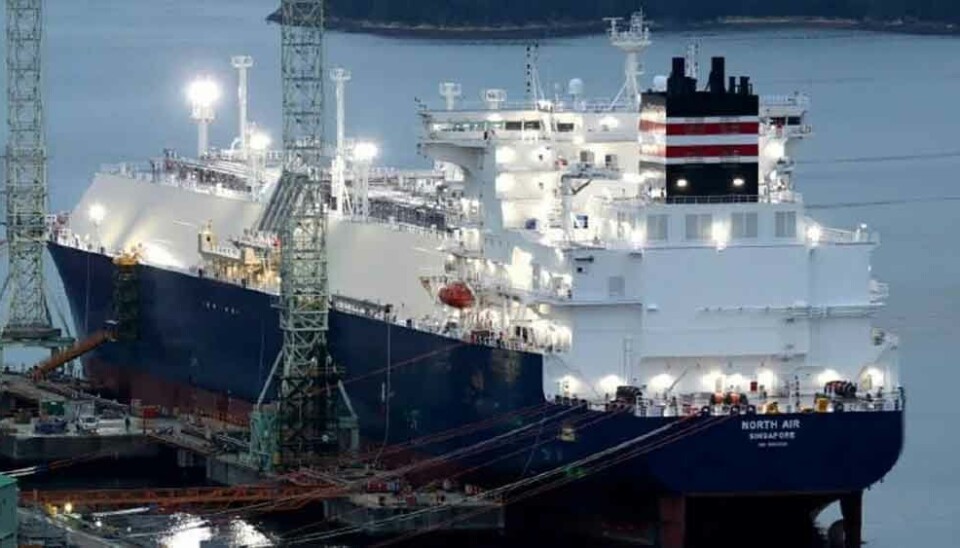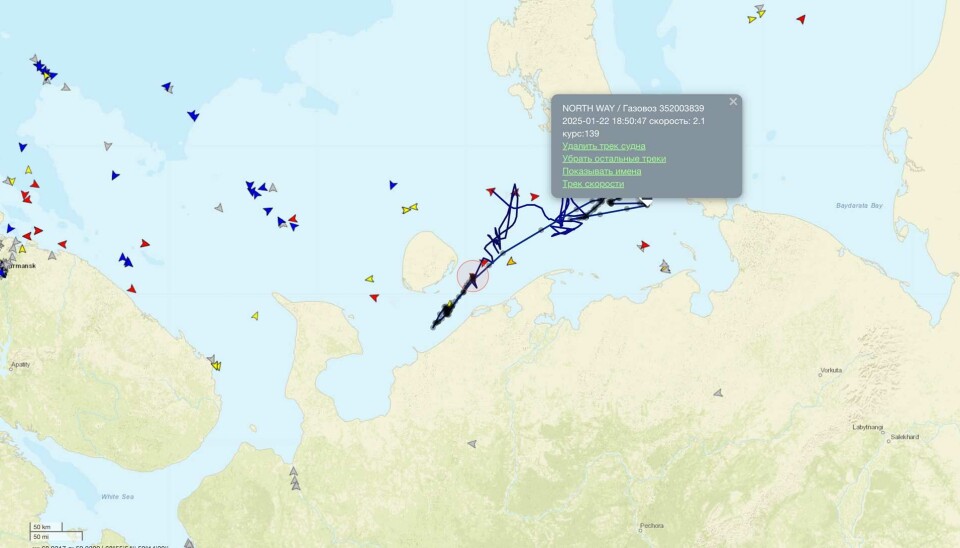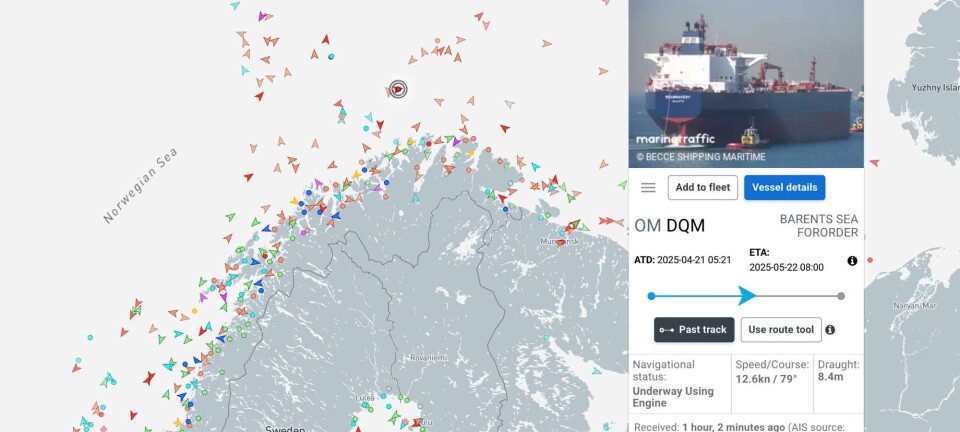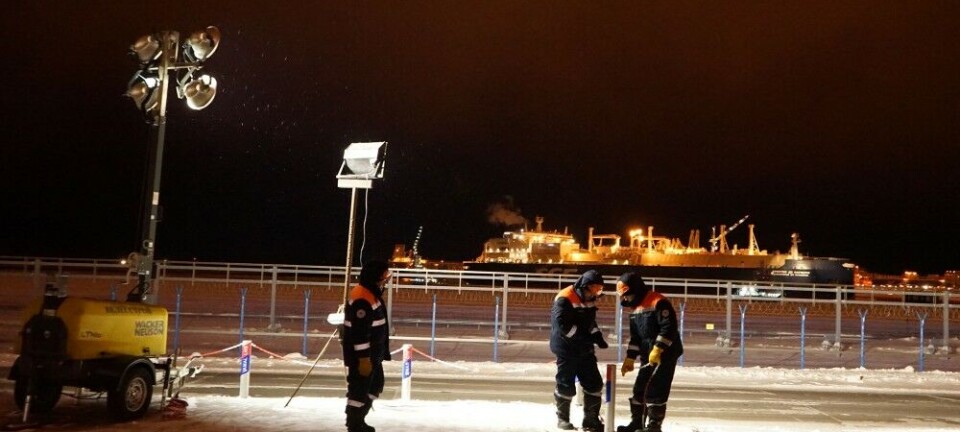
Sanctioned 'shadow fleet' gas carriers prepare for shipments on Arctic route
After having been at standstill for the whole winter, a sanctioned fleet of tankers prepare for export of Russian LNG across the Northern Sea Route.
Sea ice is still lying thick over the Arctic waters. But Russia's fleet of gas carriers is already prepared to move into the sea ice.
At least five of the LNG carriers that are sanctioned by the EU are among the vessels that have gotten formal approved for this year's sailing on the Northern Sea Route (NSR). Judging from the registry of NSR Administration, the ships are allowed for sailing in the area from May 23, 2025 to February 20, 2026.
The carriers are all part of the so-called 'shadow fleet' that exports sanctioned Russian hydrocarbons to international markets. Like other sanctioned ships, they have over the past three years repeatedly changed names, ownership and flag states.
The Buran, Voskhod, Iris and Zarya until recently carried the names North Air, North Mountain, North Sky and North Way respectively. Few months earlier, the Voskhod was named Samsung 2580, the Iris - North Star and the Zarya - North Wind, information from shipping information system Equasis shows.
All the four ships are built in 2023 and 2024. They have ice class category Arc4, which allows them to sail independently through light sea ice conditions. Since early 2025, they have all sailed under Russian flag.
The European Union imposed sanctions on the vessels in December 2024. According to the EU Council, they "are operated in such a way as to contribute or support actions or policies for the exploitation, development or expansion of the energy sector in Russia, including energy infrastructure."

Since their inclusion in the sanctions list, the carries have been drifting idle in the Barents Sea. That standstill is now likely to come to an end.
As soon as the layers of s ea ice shrink, the carriers will set course for the Gulf of Ob where they will load natural gas from either the Yamal LNG or Arctic LNG 2.
The latter plant is subjected by US sanctions.
A fifth vessel, apparently of the same fleet, has for the past two weeks drifted outside the Norwegian Arctic coast. The North Valley is so far not subjected to sanctions. The carrier is most likely waiting for a LNG transshipment by the Kildin Island, near Murmansk.

Among the sanctioned LNG carriers now preparing for sailing on the Northern Sea Route is also the Christophe de Margerie, Russia’s first top ice-class LNG tanker of the Yamal2max-class.
For five months, the Christophe de Margerie has drifted and sailed back-and-forth in the area of the Kara Gate, the waters that separate the Barents Sea and the Kara Sea.
The Christophe de Margerie has permission from the NSR Administration to sail on the route without icebreaker escort from June 1.
Shipping on the Northern Sea Route is connected with significant risks.
Ice maps from the last week of May show that practically the whole area between the Barents Sea and the Bering Strait is covered by sea ice. Along the coast of the Laptev Sea and the East Siberian Sea is a thick and almost impenetrable belt of fast ice. In the Chukchi Sea was a stretch with thick, multi-year-old sea ice.
The European Union has since Russia launched its full-scale war against Ukraine significantly stepped up its pressure on the country's energy industry.
On May 20, 2025, the EU Council announced its 17th package of sanctions against Moscow. It is aimed at cutting off the country's access to key military technology and curbing its energy revenues that fuel the war of aggression against Ukraine, the Council emphasised.
"While Putin feigns interest in peace, more sanctions are in the works. Russia’s actions and those who enable Russia face severe consequences. The longer Russia persists with its illegal and brutal war, the tougher our response will be," she added.
On the updated sanctions list were another 189 vessels of the 'shadow fleet' that brings Russian oil to international markets. On the list was also LNG carrier Arctic Metagas.
The total number of sanctioned ships now amounts to 342. Most of them sail under third country flags of convenience.

















